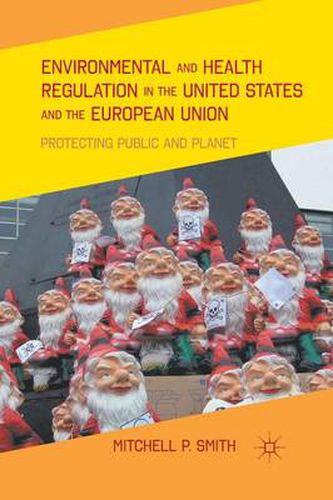Readings Newsletter
Become a Readings Member to make your shopping experience even easier.
Sign in or sign up for free!
You’re not far away from qualifying for FREE standard shipping within Australia
You’ve qualified for FREE standard shipping within Australia
The cart is loading…






This title is printed to order. This book may have been self-published. If so, we cannot guarantee the quality of the content. In the main most books will have gone through the editing process however some may not. We therefore suggest that you be aware of this before ordering this book. If in doubt check either the author or publisher’s details as we are unable to accept any returns unless they are faulty. Please contact us if you have any questions.
During the first decade of the twenty-first century, the United States increasingly has relaxed its regulatory posture in the face of critical challenges to public health and the environment. This is true for regulation of recycling of end-of-life products, including autos and electronic components; potentially hazardous chemicals; and health claims on food labels. Coincidentally, the European Union has gravitated toward more restrictive regulation in these very same areas. How might we explain these diverging regulatory trajectories of the world s two largest market economies in an era of rising public awareness of dangers to the public and the planet? The explanation derives not from cultural differences in willingness to tolerate risk, but rather from distinctive regulatory tradeoffs - between environment and competitiveness in the United States and environment, competitiveness, and integration in the EU.
$9.00 standard shipping within Australia
FREE standard shipping within Australia for orders over $100.00
Express & International shipping calculated at checkout
This title is printed to order. This book may have been self-published. If so, we cannot guarantee the quality of the content. In the main most books will have gone through the editing process however some may not. We therefore suggest that you be aware of this before ordering this book. If in doubt check either the author or publisher’s details as we are unable to accept any returns unless they are faulty. Please contact us if you have any questions.
During the first decade of the twenty-first century, the United States increasingly has relaxed its regulatory posture in the face of critical challenges to public health and the environment. This is true for regulation of recycling of end-of-life products, including autos and electronic components; potentially hazardous chemicals; and health claims on food labels. Coincidentally, the European Union has gravitated toward more restrictive regulation in these very same areas. How might we explain these diverging regulatory trajectories of the world s two largest market economies in an era of rising public awareness of dangers to the public and the planet? The explanation derives not from cultural differences in willingness to tolerate risk, but rather from distinctive regulatory tradeoffs - between environment and competitiveness in the United States and environment, competitiveness, and integration in the EU.